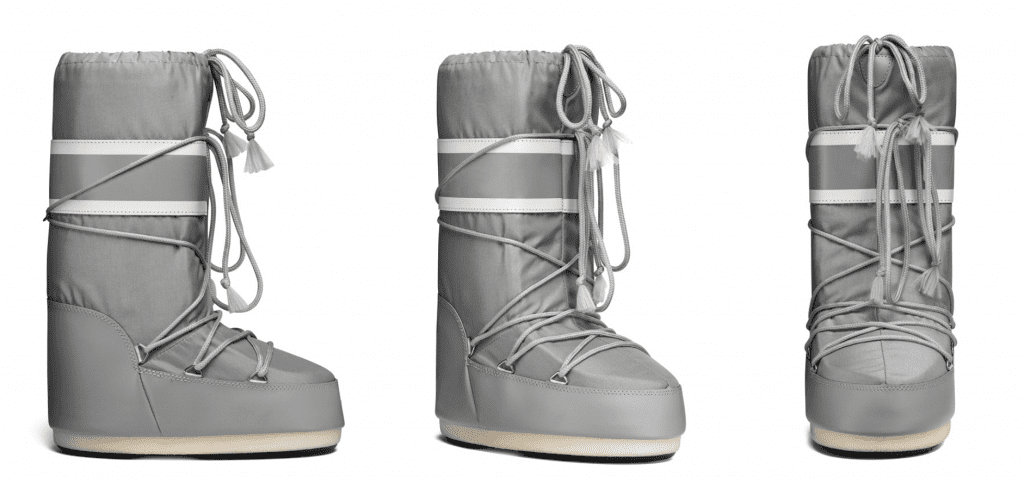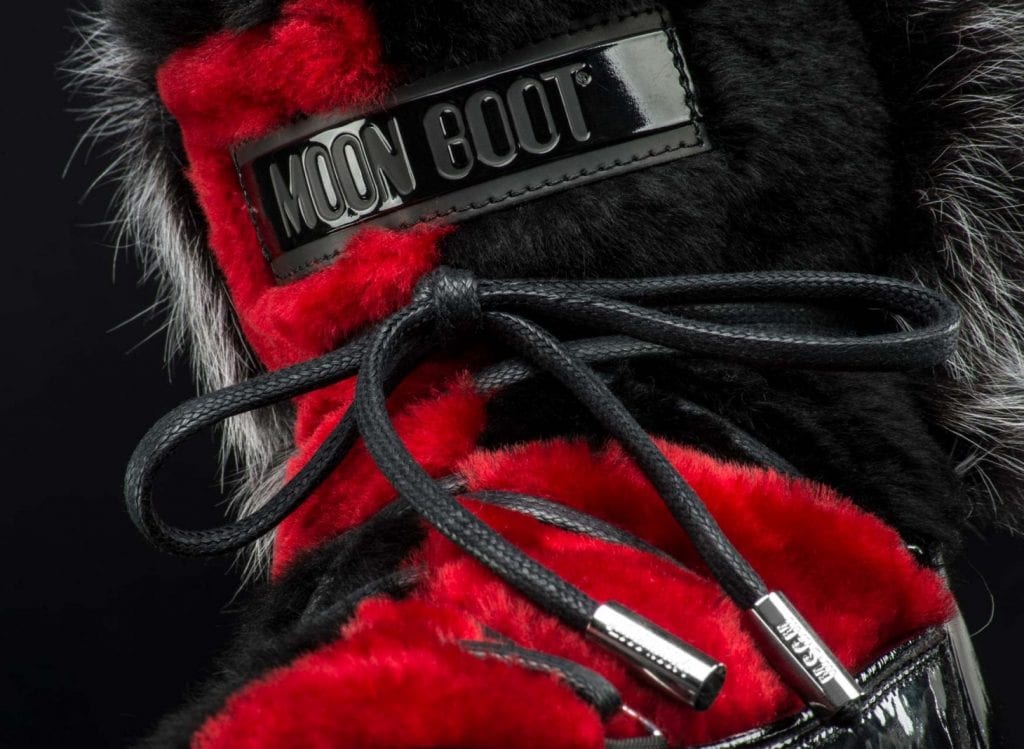On July 20, 1969 at 10:17pm, Giancarlo Zanatta was glued to the television in his home in Montebelluna, Italy. Like some 650 million individuals across the globe, the 31-year old was watching Neil Armstrong become the first person to ever step onto the moon as part of NASA’s Apollo 11 mission. In the shoe-making business, Zanatta was particularly struck by the thick rubber-soled and soft-upper boots worn by Armstrong and his crew mates Michael Collins and Buzz Aldrin. He had an idea.
The moon landing came as Italy was in the midst of an awakening. “As European economies recovered from World War II in the 1950s and 1960s, leisure time came to be recast not as a luxury, but as a fundamental right of citizenship,” as The Atlantic’s Andrew Denning put it several years ago, the Italian Alps were starting to emerge as a hot bed for ski-centric tourism. Sensing an unignorable opportunity, Giancarlo and his brother Ambrosiano, who had taken over their father’s work-boot business years prior, were moving into the sportswear market.
An after-ski boot that closely mirrored the one that the Apollo 11 astronauts wore would be their first offering: in 1970, Calzaturificio Tecnica Spa released what would become their world-famous Moon Boot.
The Rise of the Moon Boot
“Skiers needed a comfy, warm shoe to wear to the post-ski party,” the company revealed decades later. In barely any time at all, “Cramp-toed skiing masses fell in love with the big, comfortable boots,” putting Tecnica – which operated from Giavera del Montello, an Italian town situated 25 miles northwest of Venice – on the map.
“In the 1980s, the boots were a hit with the Paninari style tribe famed for bringing skiwear labels, such as Aspesi, from chic ski resorts to the streets of northern Italy,” according to the Financial Times’ Lucie Muir. “They were also the favored footwear of Paul and Linda McCartney — just the thing for bouncing between the studio and their farm on the Mull of Kintyre.” By early 2020, Tecnica had sold nearly 30 million pairs worldwide, boasting upwards of 3,000 stockists in more than 70 countries, and fans that range from Paris Hilton and famed supermodels like Elle McPherson to no shortage of fashion industry influencers, and collaborators, including Moschino, Jimmy Choo, and Moncler.
In the midst of its rise to fame, the appearance of the boot, itself, came to serve as an indicator of its source. In other words, due to years of consistent use and marketing of the design by Tecnica, rising sales, and media attention, among other things, consumers around the world had come to link the boot with a single source, thereby, giving rise to trademark rights in the 3D shape of the “Moon Boot” in a number of jurisdictions across the globe, including the U.S. and European Union, the latter of which issued a trademark registration to Tecnica for the design of the boot – for use on goods, such as clothing and footwear – in March 2012. (Tecnica was granted a registration in the U.S. in 2017).

Invalidation Proceedings
Over the years, Tecnica’s trademark-protected moon boot has continued to find fans in skiers and fashion brands, alike, with luxury names – from Louis Vuitton and Dior to Fendi and Chanel –selling their own pricey takes on the moon boot. The explosion of lookalike offerings came to a head, in some sense, in the European Union in the spring of 2017 when Swiss wholesaler Zeitneu GmbH called foul.
In a filing in May 2017, Zeitneu asked the EU trademark office to declare Tecnica’s moon boot mark invalid, arguing that the mark – with its elliptical-shaped sole, L-shaped body, lacing that is “fastened in ring loops that move up the upper, crossing over at the back of the boot, finishing at the top of the boot shaft,” and “a central band [on the upper] that is wider and located between two external bands which are narrower” – is not distinctive, as required for trademark registration.
Given that the overall shape and design of Tecnica’s Moon Boot is not all that different from other après-ski boots on the market, Zeitneu asserted that consumers no longer view the design configuration as an indicator of source, and instead, view it as a generic style of boot.
The EUIPO’s Cancellation Division agreed, stating in a decision last year that the boot design lacks distinctiveness in large part because the “L” shape mirrors that of a larger pool of boots, and therefore, cannot be registered in accordance with the EU trademark law, which mandates that marks that are devoid of distinctive character shall not be subject to registration. With that in mind, the Cancellation Division invalidated the mark for use in Class 25, the class of goods/services that includes footwear.
Unhappy with the outcome, Tecnica appealed, only to have the First Board of Appeal of the EUIPO uphold the Cancellation Division’s decision on the grounds that the moon boot mark “has the general ‘L’ shape of any other boot that has to adapt to the feet,” and therefore, “does not depart from the ‘norms or customs of the sector.’” In a decision in July 2020, the Board went further, holding that not only is the shape of the boot not distinctive, the “remaining features” of Tecnica’s mark for the Moon Boot configuration – such as the specific lacing configuration and the various ornamental bands that adorn the ankle of the boot – “do not have anything particular compared to other after-ski boots.”
While the Board acknowledged that the boot design does, in fact, include some original aesthetic and design features as a product, that is not enough to make it distinctive. Furthering its point, the Board asserted that fashion is a market that consists of “design products [that are] characterized by the originality of the shapes of the products and/or their decorative elements, [and] which are appreciated for their originality and aesthetic beauty.” At the same time, it stated that such potential originality, on its own, “does not normally” give rise to distinctiveness or “fulfil the function of indicating the commercial origin of the products themselves.”
Such a finding is problematic, according to Hogan Lovells’ Federica Pezza, as “in order to be distinctive, a shape must differ significantly from the shape that is expected by the consumer, and it must differ significantly from the norm or customs of the sector.”
In its defense, Tecnica had argued that the rate at which its Moon Boot design has been imitated by other brands – such as Chanel, Chloe, Michael Kors, and Marc Jacobs – is evidence of the level of acquired distinctiveness at play.
(U.S. courts routinely consider various factors to determine if acquired distinctiveness exists, and while “no single factor is determinative, some jurisdictions consider proof of intentional copying particularly probative evidence,” per Schiff Hardin’s Linda Stevens. At the same time, Fish & Richardson’s Keith Barritt states that “trying to determine when such copying is evidence of the existence of acquired distinctiveness and when it is evidence of the copier’s belief that acquired distinctiveness was lacking is a difficult task,” noting that “many courts give greater latitude to copiers of product design trade dress” – such as the design of a boot – “believing it is more likely competitors are merely trying to compete than to infringe some as-yet unproven acquired distinctiveness in the alleged mark.”)
Unpersuaded, the Board found that “Tecnica’s claim that [its] product has been widely imitated is antithetical to [its] claim for acquired distinctiveness,” asserting that “between the initial design and marketing of the [moon boot] product, and application for registration some 40 years later, a number of similar, even identical products, were marketed from diverse commercial sources.”
With the foregoing in mind and having “extensively reviewed substantial evidence,” the Board held that the design of Tecnica’s boots is not inherently distinctive and has not acquired distinctiveness, and thus, upheld the Cancellation Division’s decision, confirming what Pezza calls the “well-settled principle that it is not sufficient for a shape to be aesthetically pleasing for it to be distinctive.”
While the decision is a loss for Tecnica, the brand’s registration for the configuration of the moon boot is still valid in the U.S., as well as in Italy, where, as it argued in the proceeding at hand, courts have recognized the shape of the moon boot as a “reputed mark.” Still yet, Tecnica maintains registrations for its “moon boot” word mark for use on footwear, among other things, in no small number of jurisdictions – from the U.S. and EU to Switzerland and Italy.
The Implications
“The case serves as an interesting reminder of the differences between originality and distinctiveness, what factors of a design may be taken into account when assessing distinctiveness, and what factors will not be sufficient in ultimately proving that a trade mark is distinctive,” according to Field Fisher’s Amy Reynolds. Beyond that, she says that the outcome also speaks to “the difficulty that fashion and accessory designers may face in protecting their designs as trademarks,” noting that in some cases a design registration or unregistered design may be a more appropriate form of protection, even if such protection does not last as long as a trademark.
Ultimately, the Board’s decision serves as a reminder of the duty of rights holders to police unauthorized uses of their trademarks and trade dress by third parties in order to prevent saturation of the market with similar marks, which could stand in the way of enduring protections, which Tecnica has learned the hard way.













